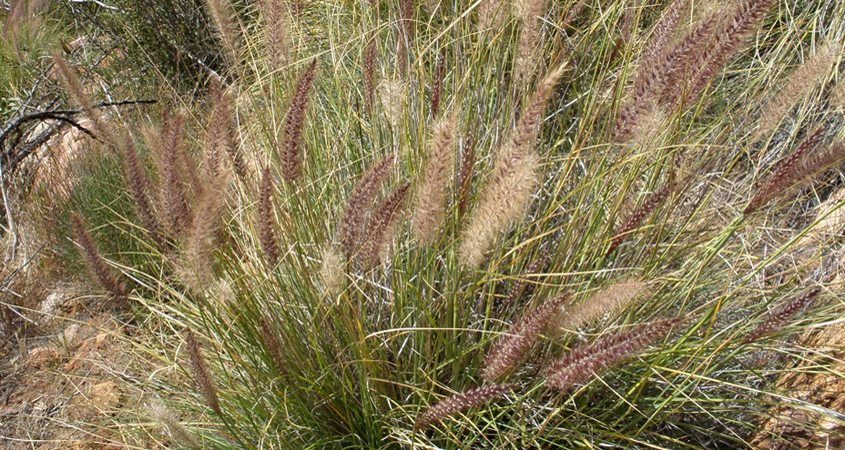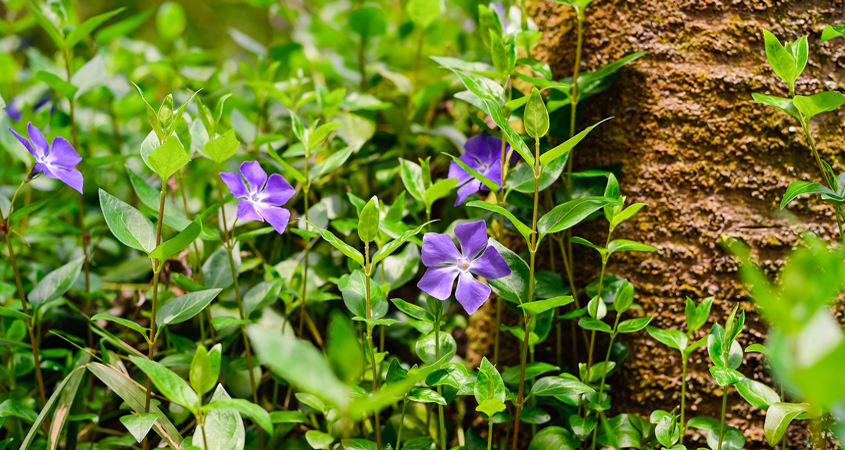 Outside its native African habitat, fountain grasses are an invasive species. In California it has no natural enemies and outcompetes native plant species. Photo: UCRiverside/Center for Invasive Species Research
Outside its native African habitat, fountain grasses are an invasive species. In California it has no natural enemies and outcompetes native plant species. Photo: UCRiverside/Center for Invasive Species Research Avoid ‘Takeover Artists’ in Your Landscaping
Just like people, many non-native plants love everything about San Diego County and choose to make it their home. They love it so much these invasive plants have moved in, stretched out, and are doing their best to take over.
They do what they can to make room by hurting native plant species. They drain precious rainwater and soil nutrients away from the native plants, which are not as aggressive. Other invaders overrun habitat and keep other species out. Many, such as fountain grasses, have no natural enemies outside their native habitat to keep them in check.
The worst invasion plant offenders
You may have unknowingly planted a few of these common plants in your yard. They are still sold commercially. Very few non-native species offer any benefits to our region’s environment. Local animals and insects are not interested in them.

Vinca major (big periwinkle) is a spreading perennial vine or ground cover. In California, periwinkle has escaped from garden plantings, and lowers species diversity and disrupts native plant communities. Photo: Ghostcage/Pixabay – Creative Commons License
Here are some common problems:
- African Fountain Grass
- Mexican Feather Grass
- Brazilian Pepper Tree
- Scotch Broom
- Periwinkle
Invasive species and species that act like invasive plants should be removed from your landscaping. They should also be removed from commercial nursery stock, and shouldn’t ever be planted in the first place. Remove them at the soonest opportunity.
How to identify non-native plants
The California Invasive Plant Council maintains a list of invasive plants that cause problems through the state, though the list may miss regionally problematic plants. For more, go to the Plant Right website.
This article was inspired by the 71-page Sustainable Landscapes Program guidebook available at SustainableLandscapesSD.org. The Water Authority and its partners also offer other great resources for landscaping upgrades, including free WaterSmart classes at WaterSmartSD.org.



